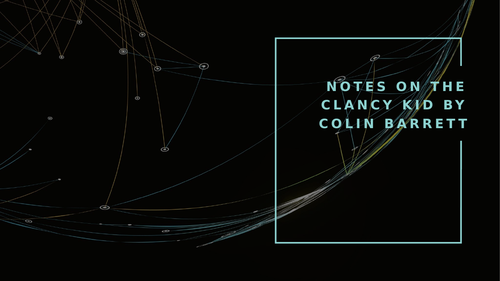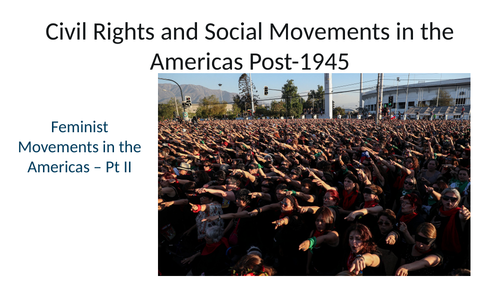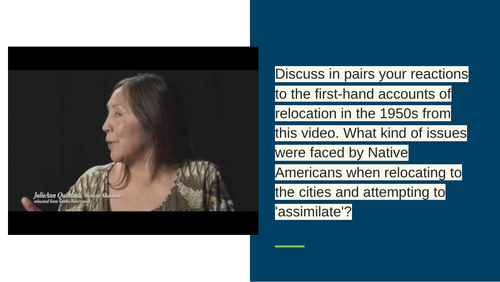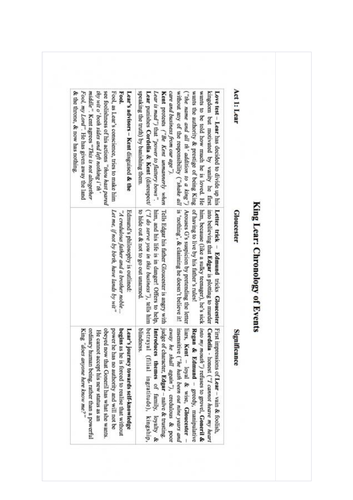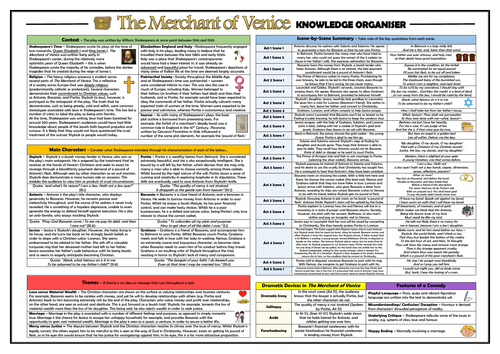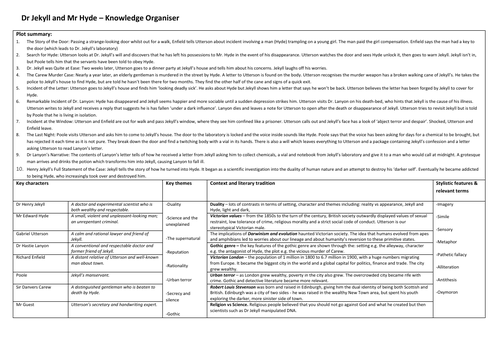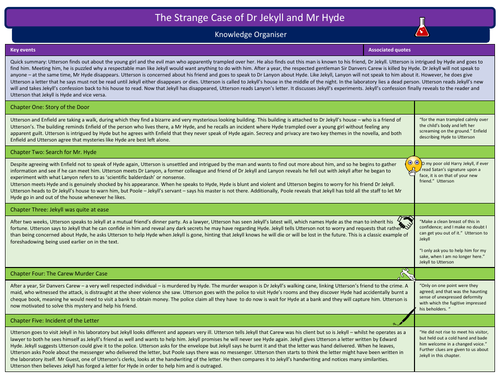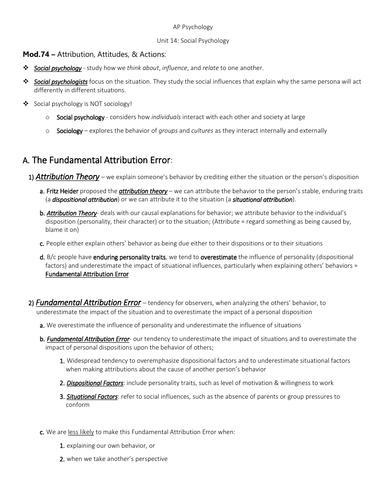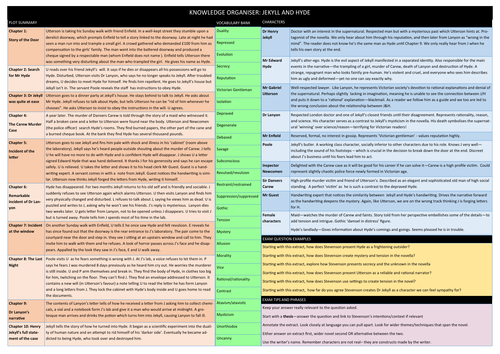
428Uploads
101k+Views
7k+Downloads
All resources

"The Clancy Kid" by Colin Barrett POWERPOINT
notes on “The Clancy Kid” by Colin Barrett: POWERPOINT
Setting and Atmosphere
Characters
Themes
Narrative Style
Cultural Context
Social Setting

Feminist Movements in the Americas
Unit: Feminist Movements in the Americas
Objectives:
Identify factors leading to women’s suffrage in the USA, Canada, and Latin America.
Understand the catalysts for the 1960s second wave of feminism.
Examine NOW’s role in achieving gender equality.
Explore reasons for the women’s movement split and opposition it faced.
Presentation s Feminist Movements in the Americas - Pt I +2 (Guided Notes)

Indigenous People and Civil Rights Powerpoint
Civil Rights and Social Movements in the Americas Post-1945
Indigenous People and Civil Rights

Sharp notes - King Lear
The notes collectively provide a comprehensive overview of key events, character dynamics, and thematic elements in Acts 1 through 5 of Shakespeare’s “King Lear.” The structured summaries cover Lear’s initial decision to abdicate, the dynamics between Lear and his daughters, the unfolding deceit by characters like Edmund, and the consequences that lead to madness, suffering, and ultimately, tragedy.
In Act 1, Lear’s decision to divide his kingdom and the subsequent flattery competition among his daughters showcase themes of authority, vanity, and the potential for deception. Act 2 introduces Edmund’s plot against his legitimate brother Edgar, setting the stage for betrayal and manipulation.
Act 3 delves into Lear’s descent into madness, the mistreatment he faces from his daughters, and the parallel storyline of Gloucester’s suffering. Act 4 portrays the consequences of the characters’ actions, including Gloucester’s attempted suicide and the reunion of Lear and Cordelia.
Act 5 reaches the tragic climax, featuring Lear’s heartbreaking realization of his mistakes, the death of key characters, and the play’s somber resolution. The notes capture the essence of each act, providing a condensed yet informative guide to the intricate narrative, character arcs, and the play’s central themes.

Writing Map
Serves as a comprehensive guide for analyzing and writing about literature
Addresses questions related to characters, themes, and text exploration
Encompasses various elements:
Inference Phrases
Discourse Markers
Point Sentence Starters
Detailed breakdown of Language and Structural Techniques
Encourages identification and analysis of powerful words and phrases
Explores their effects, associated techniques, and impact on readers and author’s intentions
Provides a comprehensive list of language and structural techniques:
Adverbs
Imagery
Repetition
Parallel structure
And more
Facilitates a thorough examination of literary elements
Functions as a helpful tool for students or writers
Aids in organizing thoughts and responses when engaging with and writing about literature.

AP Psychology Social Psychology NOTES – Attribution, Attitudes, & Actions:
AP Psychology
Social Psychology
– Attribution, Attitudes, & Actions:

Narrative Writing Worksheet: Understanding Characters and Relationships Sally Rooney Normal People
Narrative Writing Worksheet: Understanding Characters and Relationships Sally Rooney Normal People

King Lear Act 1 Test
he King Lear Act 1 Test is a comprehensive assessment designed for 6th Year Leaving Certificate English students. The test evaluates students’ understanding of the main events, themes, characters, and literary techniques in Act 1 of King Lear.
Test Breakdown:
Part 1: Multiple Choice Questions (10 marks)
This section consists of 10 multiple-choice questions. Each question focuses on key moments, character actions, or significant quotes from Act 1. Students are required to select the correct answer from four choices.
Topics covered include:
Lear’s decision to divide his kingdom.
The roles of characters like Cordelia, Kent, and the Fool.
Key quotes and Lear’s emotional state by the end of Act 1.
Part 2: Fill-in-the-Gaps (11 marks)
This section requires students to complete missing words from important quotes in Act 1. A word bank is provided to assist students in filling in the blanks.
Example quotes include:
Lear: “How sharper than a __________’s tooth it is to have a __________ child!”
Fool: “Thou hadst little __________ in thy bald crown when thou gavest thy __________ one away.”
Part 3: Who Said It? (5 marks)
In this section, students match famous quotes from Act 1 to the correct character. Each quote is listed with four possible speakers, and students must identify who said it.
Key quotes include lines from Lear, Cordelia, Kent, and the Fool.
Part 4: Short Answer Questions (10 marks)
This section includes 10 short answer questions, requiring students to respond in 1–2 sentences. The questions focus on character actions, motivations, and significant plot points.
Example questions include:
How does Edmund manipulate his father Gloucester in Act 1?
What advice does the Fool give to Lear in Scene 4?
Part 5: Character Analysis (20 marks)
This section is the most detailed part of the test, asking students to choose one of three essay-style questions to answer. The focus is on analyzing key characters (Lear, the Fool, Goneril, and Regan) and how they are developed in Act 1. Students are expected to refer to key quotes and techniques used by Shakespeare.
Example essay questions include:
Analyze King Lear’s actions in Act 1. How do his decisions to divide the kingdom and test his daughters reflect his personality flaws?
Discuss the role of the Fool in Act 1. How does he use humor and criticism to help Lear understand his mistakes?

King Lear Worksheet
Unlock your students’ understanding of Shakespeare’s King Lear with this detailed and structured worksheet focused on Act 1 Scene 1. This resource is perfect for helping students engage deeply with the text, encouraging close reading and textual analysis.
Key Features:
Guided Questions with Embedded Quotes:
Students are prompted to answer key questions about the scene, with a selection of quotes provided to support their responses. This helps them practice using evidence from the text to back up their analysis, following the PEE (Point, Evidence, Explanation) structure.
Character Analysis:
Explore the motivations and emotions of key characters like Gloucester and King Lear. Students are encouraged to analyze Gloucester’s complex feelings toward his son Edmund and Lear’s reasons for dividing his kingdom.
Matching Exercise - Daughters’ Responses:
A creative and interactive task where students match each of Lear’s daughters (Goneril, Regan, and Cordelia) to the correct adjective that describes their nature, and then connect this to a corresponding quote from the text. This exercise aids in developing critical thinking and comprehension skills.

King Lear Act 1 Scene 5 Worksheet
Multiple Choice Questions
Four questions focusing on Act 1 of King Lear, specifically Lear’s actions and mental state. These questions assess students’ understanding of the early plot and the interactions between Lear, his daughters, and the Fool. Topics include Lear’s fear of madness, his confrontation with Goneril, and the role of the Fool as a truth-teller.
2. Fill-in-the-Blanks with Quotes
This section helps students recall and complete important quotes from the play. It includes four key quotes that deal with Lear’s growing awareness of his mistakes, his regret towards Cordelia, and his early expressions of madness.
3. PEE Chains (Point, Evidence, Explanation)
Two tasks encourage students to construct PEE paragraphs, which develop their ability to analyze Lear’s character development and his relationship with the Fool:
Task 1: Focuses on how Lear’s character changes from Act 1, Scene 1 to Act 1, Scene 5, particularly his growing fear of madness.
Task 2: Explores the Fool's role as Lear’s conscience and truth-teller, using sentence starters to help students analyze their interactions.
In both tasks, sentence starter suggestions for Point, Evidence, and Explanation are provided, giving students a structured approach to their analysis.
4. Matching Exercise – Quotes and Themes of Madness
This section is a matching exercise where students pair quotes from King Lear with corresponding themes related to madness. The quotes illustrate Lear’s fear of madness, regret, and identity crisis, while the themes highlight key aspects of Lear’s psychological unraveling and how it is reflected by the Fool.
The worksheet balances comprehension with deeper analysis, offering students both recall-based tasks and opportunities for analytical writing.

Where the Crawdads Sing
Where the Crawdads Sing", is a comprehensive teaching resource based on Delia Owens’ novel. It includes:
Book Introduction and Reviews: Provides critical insights and context for the novel, including thematic connections to nature, isolation, and human relationships. This section could be used to initiate classroom discussions and offer students a deeper understanding of the novel’s critical reception.
Chapter Summaries: Organized by parts and chapters, this breakdown offers a clear roadmap of the novel’s structure, which teachers can use to guide lessons, assign readings, or discuss key plot points.
Character Analyses: Detailed profiles of key characters like Kya, Tate, and Chase Andrews are provided, enabling teachers to explore character development, motivations, and relationships. These profiles also offer quotes that can be used for in-class analysis.
Discussion Questions: Thought-provoking questions are available for every major plot point and theme, ideal for fostering critical thinking, class debates, and deeper understanding of character dynamics and thematic elements.
Historical Context and Setting: Explains the relevance of the marshland setting, Kya’s isolation, and how the environment mirrors her personal struggles. This can be integrated into lessons on geography, history, or literature, helping students to connect the setting with the protagonist’s development.
Nature Journal Activity: An interactive task idea where students create a nature journal, encouraging creativity and a deeper connection to the natural world—one of the novel’s central themes.

King Lear - Themes Revision
Product Title: Comprehensive King Lear Theme and Justice Analysis Guide
Product Overview: This in-depth study guide offers a focused examination of key themes and justice in Shakespeare’s King Lear, designed for students and educators looking to explore the play’s complex moral and ethical questions. It delves into two critical areas: the dynamics of love and different forms of justice—divine, human, and social—within the play, providing structured analyses, key quotes, and discussion prompts.
Features:
Thematic Exploration:
Detailed breakdown of love in King Lear with examples of pure, selfless love vs. selfish, corrupt love.
Examination of how love is developed through character arcs, pivotal scenes, and turning points.
Discussion on the relationship between love and loyalty, highlighting characters such as Cordelia, Kent, and Edgar.
Justice in King Lear:
Thorough analysis of divine, human, and social justice, discussing characters’ actions and their consequences in terms of morality.
Insight into Shakespeare’s reflection on divine justice and human suffering, with Gloucester and Edgar’s moral journeys highlighted.
Critical Thinking Prompts:
Guided questions to help students analyze the introduction, development, and resolution of themes.
Opportunities to reflect on the relevance of these themes in understanding human behavior and societal constructs.
Ideal For:
High school and university students studying Shakespeare.
English literature teachers seeking classroom resources.
Anyone preparing for essay writing or exams focused on King Lear.
This guide simplifies complex ideas, providing accessible yet detailed content, perfect for boosting comprehension of one of Shakespeare’s most profound tragedies.

King Lear Act 3 scene 4 Worksheet Quiz
This King Lear Act 3, Scene 4 Writing Task (Scaffolded) resource is a targeted worksheet designed to help students analyze Lear’s mental breakdown and evoke sympathy through structured writing. The worksheet combines multiple-choice questions, fill-in-the-blank exercises, and scaffolded paragraph tasks, offering students clear and practical steps to understand and explore key moments from Act 3, Scene 4.
Key Features:
Multiple-Choice Questions: Focused questions test students’ understanding of Lear’s actions, emotions, and interactions in Act 3, Scene 4.
Fill-in-the-Blank with Word Bank: Students complete sentences using key vocabulary, reinforcing their understanding of Lear’s mental state, Edgar’s disguise, and the symbolic storm.
Mix-and-Match Exercise: Students match Lear’s emotions, such as desperation, madness, and recognition of injustice, with specific quotes from the scene. This activity encourages critical thinking and direct engagement with the text.
Scaffolded Paragraph Writing:
Paragraph 1: Students analyze Lear’s disintegration, using a step-by-step process to incorporate quotes and analyze how his madness, bitterness, empathy, and recognition of injustice unfold in the scene.
Paragraph 2: Students write about whether they feel sympathy for Lear, following scaffolded prompts to consider Lear’s suffering and previous actions, with textual evidence to support their conclusions.
Educational Benefits:
Structured Learning: The scaffolded approach makes complex analysis more accessible, allowing students to gradually build strong analytical paragraphs.
Enhanced Critical Thinking: Through targeted questions and exercises, students are encouraged to think deeply about Lear’s emotional and psychological state.
Textual Engagement: The use of direct quotes helps students improve their understanding of Shakespearean language and its relation to character development.

